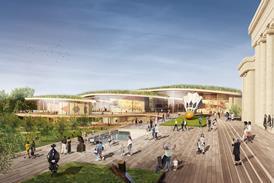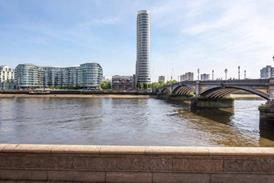- Home
- Intelligence for Architects
- Subscribe
- Jobs
- Events

2025 events calendar Explore now 
Keep up to date
Find out more
- Programmes
- CPD
- More from navigation items
The fleeting pleasure of a palimpsest exposed

A building’s history is often hidden in plain sight for those with eyes to see. But occasionally a more intimate glimpse is briefly exposed
I am very partial to remnants. A remnant is not exactly a ruin. A ruin, such as the tragic abandoned Catholic seminary, St Peter’s Cardross, will continue to evoke its past and, inevitably from now on, something of the failed and valiant hopes for its future. The passage of time – not much time – and the marks of its use – not much use, either – are all written on to the ghostly segments of structure, a great concrete leviathan in the undergrowth. It is a kind of Glaswegian Mayan ruin.
Remnants are more particular, suggestions of something known or unknown. They are frequently transitory: the stripping back of an ordinary house, laid bare to all eyes for a week or two, before the works goes on, to demolish or obscure the detail or the structure in question.
This content is available to registered users | Already registered?Login here
You are not currently logged in.
To continue reading this story, sign up for free guest access
Existing Subscriber? LOGIN
REGISTER for free access on selected stories and sign up for email alerts. You get:
- Up to the minute architecture news from around the UK
- Breaking, daily and weekly e-newsletters
Subscribe to Building Design and you will benefit from:

- Unlimited news
- Reviews of the latest buildings from all corners of the world
- Technical studies
- Full access to all our online archives
- PLUS you will receive a digital copy of WA100 worth over £45
Subscribe now for unlimited access.






